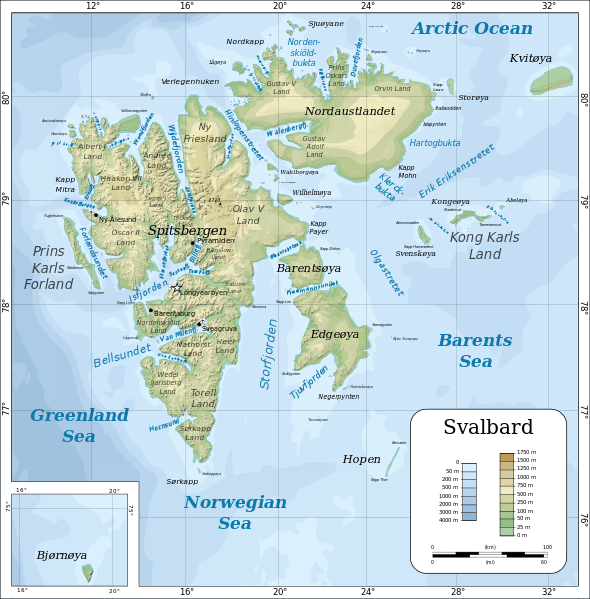- Screen Reader Access
- Skip to : main content / navigation
- Text Size
- Home
- Sitemap
- Contact us
- हिंदी
Svalbard is a group of islands (archipelago) located between the Arctic Ocean, Barents Sea, Greenland Sea, and the Norwegian Sea. Since 1920 these islands are integrated part of Norway. These islands are located directly north of Norway in the Arctic Ocean. The group of islands range from 74° to 81° north latitude and from 10° to 35° east longitude. The islands can be divided into two groups: the Spitsbergen group of Barentsøya, Edgeøya, Nordaustlandet and Prins Karls Forland, and the more remote islands of Bjørnøya, Hopen, Kong Karls Land and Kvitøya.
Svalbard is the northernmost place in the world with a permanent population. Located between the 76° and 81° parallels, they are far more northerly than any part of Alaska and all but a few of Canada's Arctic islands. In fact, they would be permanently locked in by ice if not for the moderating influence of the Gulf Stream, and it is this comparative warmth that makes them habitable. The islands cover a total of 62,050km2, the largest of which are Spitsbergen, Nordaustlandet and Edgeøya. The combined permanent population is less than 3000, nearly all of which is concentrated in the main settlements of Longyearbyen and Barentsburg on Spitsbergen.
The archipelago features an Arctic climate, although with significantly higher temperatures than other areas at the same latitude. The flora takes advantage of the long period of midnight sun to compensate for the polar night. Svalbard is a breeding ground for many seabirds, and also features polar bears, reindeer, the arctic fox, and certain marine mammals. Seven national parks and twenty-three nature reserves cover two-thirds of the archipelago, protecting the largely untouched, yet fragile, natural environment. Approximately 60% of the archipelago is covered with glaciers, and the islands feature many mountains and fjords.

(Image: Map of Svalbard archipelago, Courtesy: wikipedia)